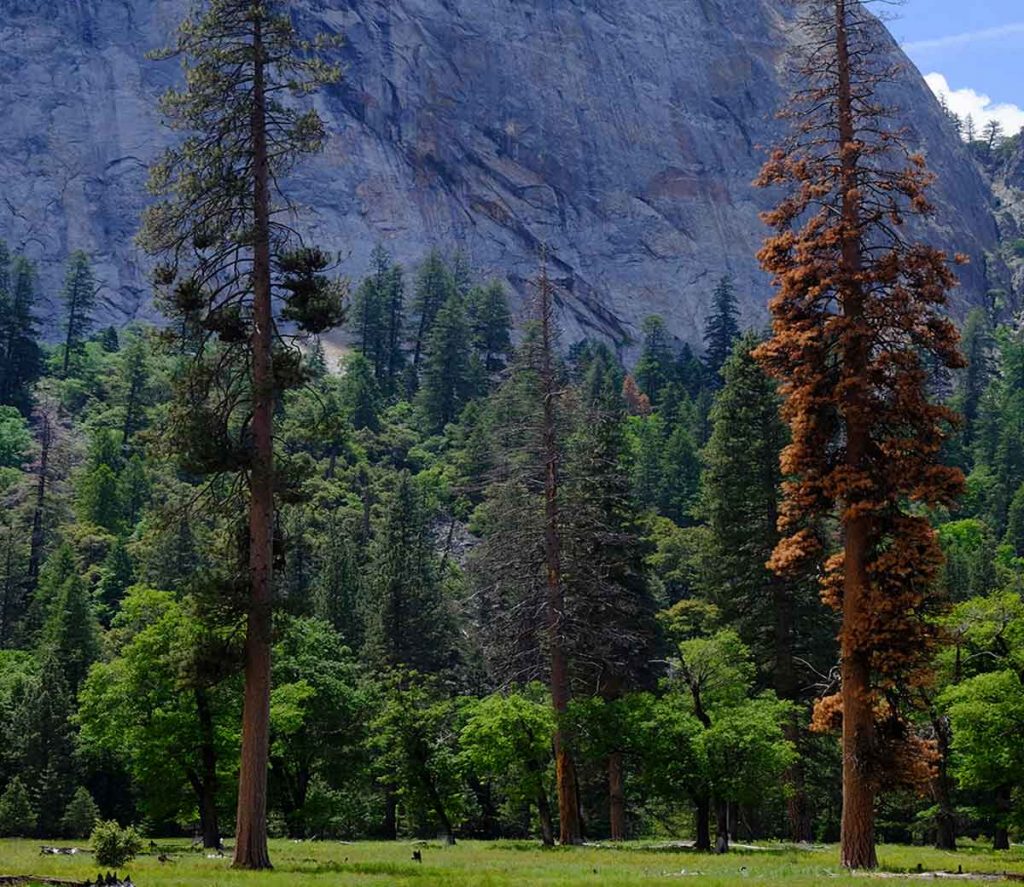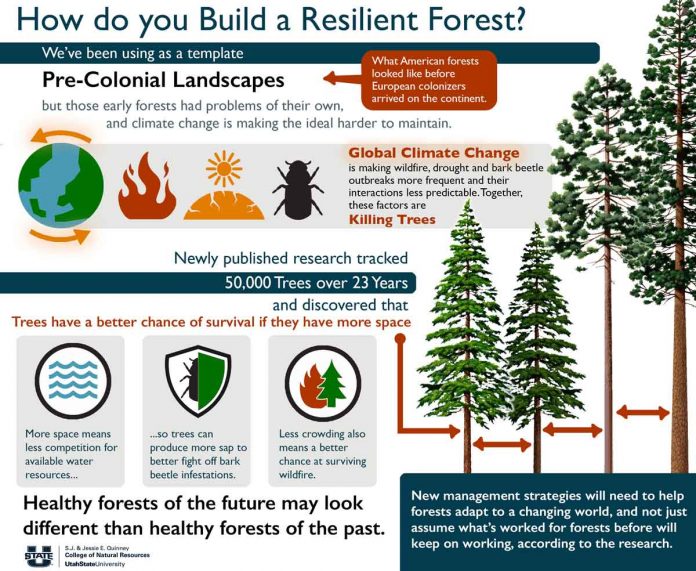According to new research, achieving historical conditions of forests are becoming increasingly hard to achieve in a changing world. According to Utah State University’s Department of Wildland Resources scientists, managers need to consider new strategies for building resilient forests.
Researchers said, in the era of large-scale fires, beetle invasions and frequent drought, maintaining ‘ideal’ historical conditions is becoming unrealistic. Changing climate is making things unpredictable. For restoration efforts, recreating historical conditions has been a key strategy. But today’s conditions need different strategy. Research shows that lower crowding for trees can increase chances of survival after fire. Long-term studies shows that chances for long-term tree survival increased when trees had more space.
We need to reduce competition and helping trees recover from fire more quickly. Scientists performed tens of thousands of post-mortems on dead trees in the Sierra Nevada mountains. Scientists found that in crowded forests, trees were less tolerant of fire damage. These were more susceptible to post-fire bark beetle attack. In open forests, trees can tolerate higher levels of fire damage. Drought increases a forest’s susceptibility to both fire and bark beetle infestations. Research shows that lower forest density can actually reduce the risk of both.

The new research shed light on forest restoration strategies which could be used when historical reference conditions are not a viable option. This will be a critical step in the effort to help forests adapt to a changing world.
Forests from the pre-settlement era had their own problems. Those ecosystems were successful at overcoming the disturbances of their time. Those strategies don’t necessarily translate to resilience today. As today’s world is defined by climate change.

